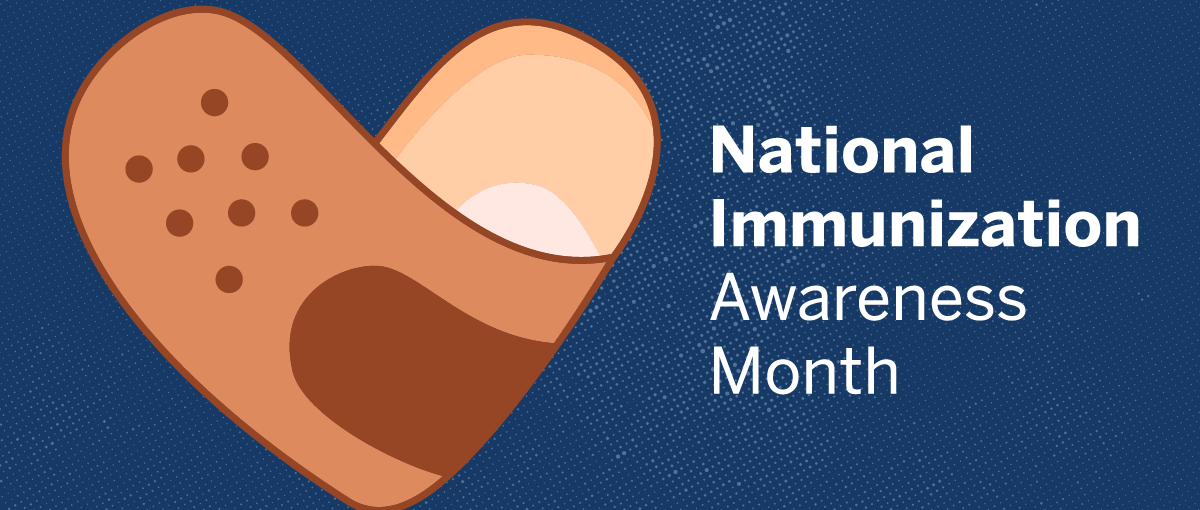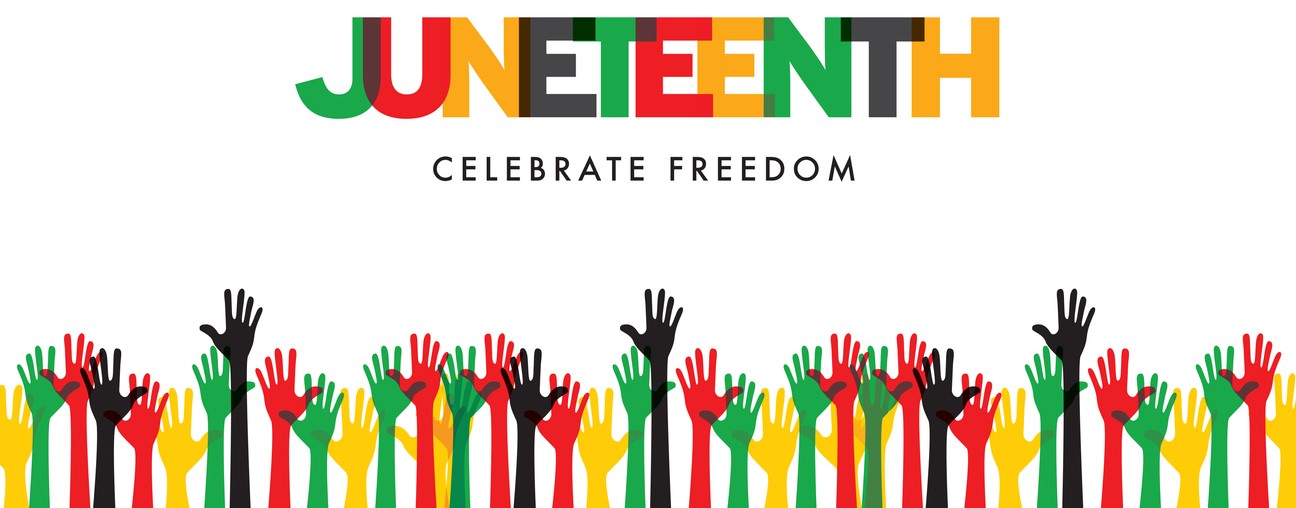State Category: Delaware
The Impact of Chronic Underfunding on America’s Public Health System 2024: Trends, Risks, and Recommendations
National Immunization Month Highlights Lifesaving Benefits of Vaccines
August 2024
National Immunization Awareness Month sponsored by the National Public Health Information Coalition (NPHIC) and observed every August, highlights the lifesaving benefits of vaccines. During the month, activities will raise awareness of the importance of vaccinating people of all ages against serious and sometimes deadly diseases. The awareness month also celebrates the successes of immunizations and educates Americans about vaccine safety and effectiveness.
According to a study by the Commonwealth Fund, from December 2020 through November 2022, COVID-19 vaccines prevented approximately 18.5 million hospitalizations and 3.2 million deaths in the U.S., but the lifesaving impact of vaccines extends far beyond COVID-19. Vaccines have dramatically reduced the spread of diseases like measles, polio, and whooping cough, protecting countless individuals and communities.
According to new data published this month by the CDC, among children born during 1994-2023, routine childhood vaccinations will have prevented about 508 million cases of illness, 32 million hospitalizations, and 1,129,000 deaths over the course of their lifetimes.
Unfortunately, numerous factors have led to a decline in vaccination rates in recent years including healthcare disruptions during the COVID-19 pandemic and the spread of misinformation about vaccine safety and effectiveness. In some cases, this has resulted in outbreaks of once-controlled diseases, including measles and to a lesser degree polio, jeopardizing the progress we have made.
According to the American Association of Immunologists, getting vaccinated protects against the spread of infectious diseases by helping our immune systems fight infection. Vaccines work by introducing a weakened or inactive form of a virus or bacteria to the body. This triggers the immune system to develop antibodies, creating a kind of shield against future infection. When a large portion of the population is vaccinated, it creates “herd” or community-level immunity, making it difficult for diseases to spread, even protecting those who haven’t been vaccinated themselves.
The public health benefits of vaccines include:
Disease Prevention: Vaccines are highly effective at preventing serious illnesses like measles, mumps, rubella, polio, diphtheria, tetanus, whooping cough, chickenpox, shingles, influenza, and pneumonia. These diseases can cause severe complications, hospitalization, and even death.
Reduced Healthcare Costs: Vaccines are a cost-effective way to prevent illness and its associated medical expenses. Vaccination programs save billions of dollars in healthcare costs each year.
Protection for Populations at Higher Risk: Vaccines are especially important for protecting those with developing immune systems (infants) or weakened immune systems, such as older adults and people with certain chronic illnesses.
Global Health Impact: Vaccination programs have had a significant impact on global health. They have helped to virtually eliminate smallpox and dramatically reduced the burden of other diseases worldwide.
To build on and sustain the health benefits of vaccines, TFAH’s 2024 Ready or Not: Protecting the Public’s Health from Diseases, Disasters, and Bioterrorism report includes a number of important recommended policy actions to strengthen the nation’s vaccine infrastructure:
- Increased Funding: Congress should provide at least $1.1 billion per year to support vaccine infrastructure and delivery, including programs promoting equitable vaccine distribution.
- Insurance Coverage: Congress and states should ensure first-dollar coverage for recommended vaccines under commercial insurance and for uninsured populations.
- Minimizing Exemptions: States should minimize vaccine exemptions for schoolchildren, and healthcare facilities should increase vaccination rates of healthcare workers.
- New Vaccine Development: Congress should create incentives for new-product discovery to prevent and fight resistant infections including therapeutics, diagnostics, and prevention products such as vaccines.
- Strengthening Influenza Defenses: Congress should strengthen the pipeline of influenza vaccines, diagnostics, and therapeutics.
- Countering Vaccine Misinformation:The spread of misinformation about vaccines can lead to vaccine hesitancy and lower vaccination rates. TFAH calls for promoting accurate information from trusted sources to increase vaccine confidence.
According to research published in The Lancet, since 1974, vaccination has prevented 154 million deaths worldwide. By ensuring equitable access to vaccines, promoting accurate information, and investing in research and education, we can continue to harness the power of vaccines and build a healthier future for all.
Las Muertes por Alcohol, Drogas y Suicidio han Disminuido Tras Años de Aumento en EE. UU.
Datos demuestran una Primera Mejoría en Cinco Años, en la Tasa de Mortalidad Combinada por Abuso de Sustancias y Suicidio, pero las Tendencias de Varias Décadas Siguen siendo Alarmantemente Altas
(Washington, DC – 31 de julio de 2024) – Una disminución en la tasa de mortalidad inducida por alcohol llevó a una tasa combinada ligeramente más baja de todas las muertes en EE. UU. debido al alcohol, drogas y suicidio en 2022, pero la tendencia a largo plazo de tales muertes sigue siendo alarmantemente alta, según un informe publicado hoy por Trust for America’s Health (TFAH, por sus siglas en inglés).
El informe Pain in the Nation 2024: La Epidemia de Muertes por Alcohol, Drogas y Suicidio, incluye datos que muestran que entre 2002 y 2022, la tasa combinada de muertes por alcohol, drogas y suicidio ha aumentado en un 142 por ciento, con 74,003 muertes registradas en 2002 a 207,827 muertes en el 2022.
En 2022, la tasa de mortalidad inducida por alcohol disminuyó en un seis por ciento registrando 13.5 muertes por cada 100,000 personas, la primera disminución en la tasa después de más de una década de aumentos, pero las tasas de muertes por sobredosis de drogas y suicidio no presentaron ningún cambio, permanecieron iguales.
Las tasas y tendencias de muertes por abuso de sustancias y suicidio varían entre grupos de población, estados y regiones del país. Las personas indígenas americanas, nativas de Alaska, las personas negras y las personas blancas tienen tasas combinadas más altas que el promedio de muertes por alcohol, drogas y suicidio, mientras que las personas asiáticas, latinas, personas multirraciales, nativas hawaianas y de otras islas del Pacífico, tienen tasas más bajas que el promedio de muertes por abuso de sustancia y suicidio.
En 2002, los estados con las tasas más altas de muertes por alcohol, drogas y suicidio eran Nuevo México con 124.3 muertes por cada 100,000 personas, Virginia Occidental con 115.7 muertes por cada 100,000 personas y Alaska registrando 104.1 muertes por cada 100,000 personas.
El Uso de Sustancias y Sobredosis de Drogas
La tasa de mortalidad por sobredosis de drogas, cifras entre todas las edades, se mantuvo en general sin cambios entre el 2021 al 2022 con 32.4 muertes por cada 100,000 personas y de 32.6 muertes por cada 100,000 respectivamente, pero a pesar de la tendencia 107,941 personas murieron en EE. UU. debido a una sobredosis de drogas en el 2022.
Según los datos recopilados por la Administración de Servicios de Salud Mental y Abuso de Sustancias de EE. UU., en el 2022, demuestra que aproximadamente 70 millones de personas en EE. UU. de 12 años o más, alrededor de una cuarta parte de la población adolescente y adulta, reportaron haber consumido una o más drogas ilegales, mientras que poco menos del 10 por ciento de las personas a partir de los 12 años en adelante en EE. UU. tenían un trastorno tras el uso de drogas.
Las tasas de sobredosis de drogas fueron más altas entre las personas indígenas americanas/nativas de Alaska con 65.2 muertes por cada 100,000 personas, los adultos de 35 a 54 años registraron 59.4 muertes por cada 100,000, las personas negras con 47.5 muertes por cada 100,000 y los hombres con 45.6 muertes por cada 100,000.
Abuso del Alcohol
El abuso de alcohol, a pesar de que hubo una disminución de muertes inducidas por alcohol en 2022, se registraron 51,191 personas que murieron por causas inducidas por alcohol durante el año en EE. UU. Las muertes inducidas por alcohol fueron más altas entre las personas indígenas americanas y nativas de Alaska, con una tasa de 78.4 muertes por cada 100,000 personas, y los adultos de 55 a 74 años con 34.9 muertes por cada 100,000 personas.
Muertes por Suicidio
En el 2022, 49,476 personas. murieron a causa de suicidio en EE. UU. La mortalidad general por suicidio se mantuvo prácticamente sin cambios entre 2021 y 2022, con 14.1 muertes por cada 100,000 personas y 14.2 muertes por cada 100,000 respectivamente.
La tasa más alta de suicidio fue entre las personas indígenas americanas/nativas de Alaska con 27.1 muertes por cada 100,000 personas, los hombres con 23 muertes por cada 100,000, los adultos mayores con 21 muertes por cada 100,000 y las personas que viven en áreas rurales con 20.5 muertes por cada 100,000. La mortalidad por suicidio entre los grupos de edad se movió en diferentes direcciones, con las muertes por suicidio entre los jóvenes con edades entre 0-17 y 18-34 ha ido disminuyendo, pero la mortalidad ha aumentado para todos los grupos de edad avanzada.
“Aunque la estabilización en la tasa combinada de muertes por alcohol, drogas y suicidio en 2022 es una buena noticia, está ensombrecida por décadas de aumento en el número de tales muertes y resalta la necesidad de continuar aplicando soluciones basadas en evidencia para salvar vidas”, dijo J. Nadine Gracia, M.D., MSCE, presidenta y CEO de Trust For America ’s Health. “Tenemos estrategias que sabemos que funcionan, incluyendo la prevención temprana y estrategias de reducción de daños, asegurando el acceso a la atención de salud mental y conductual, y creando condiciones comunitarias que apoyen a los niños y las familias y ofrezcan a las personas oportunidades de educación y empleo. Necesitamos invertir en estos programas.”
Recomendaciones del Reporte
El informe incluye ciertas recomendaciones para los funcionarios del gobierno federal, estatal y local, entre otros interesados, para que sigan ciertos pasos para abordar para abordar la crisis de abuso de sustancias y suicidio, estas recomendaciones incluyen:
Invertir en la prevención y en condiciones comunitarias que promuevan la salud, incluyendo programas para reducir aquellas experiencias adversas durante la niñez y aquellos que apoyen a las familias y ofrezcan programas de apoyo juvenil informados por el trauma y culturalmente apropiados.
Reducir el riesgo de sobredosis y el acceso a medios letales de suicidio a través de programas de reducción de daños, incluido los programas de servicios de jeringas, acceso a medicamentos para la prevención de sobredosis como la naloxona y promover el almacenamiento seguro de las armas de fuego.
Fortalecer el sistema de prevención de salud mental y abuso de sustancias mediante la construcción continua de programas de intervención en crisis, asegurando el acceso a servicios de salud mental y abuso de sustancias, aumentando la fuerza laboral de salud mental, incluyendo la diversidad, ofreciendo servicios culturales, adaptados a cada lengua.
Lea el informe completo.
Trust for America’s Health es una organización sin ánimo de lucro y no partidista que promueve una salud óptima para todas las personas y comunidades y hace de la prevención de enfermedades y lesiones una prioridad nacional. Trust for America’s Health (tfah.org)
U.S. Deaths Due to Alcohol, Drugs, and Suicide Down Slightly After Years of Growth
Data Show First Improvement in Combined Substance Misuse and Suicide Mortality Rate in Five Years but Multidecade Trends Remain Alarmingly High
(Washington, DC – July 31, 2024) – A decrease in the alcohol-induced mortality rate led to a slightly lower combined rate of all U.S. deaths due to alcohol, drugs, and suicide in 2022, but the long-term trend of such deaths is still alarmingly high, according to a report released today by Trust for America’s Health.
The report, Pain in the Nation 2024: the Epidemics of Alcohol, Drug, and Suicide Deaths, includes data showing that between 2002 and 2022, combined rate of deaths due to alcohol, drugs, and suicide have increased by 142 percent from 74,003 deaths in 2002 to 207,827 deaths in 2022.
For 2022, the alcohol-induced mortality rate decreased by six percent to 13.5 deaths per 100,000 people, the first decrease in the rate after more than a decade of increases, but death rates for drug overdose and suicide remained unchanged.
Rates and trends for deaths due to substance misuse and suicide vary across population groups and states and regions of the country. While all population groups have experienced increases in substance misuse and suicide deaths over the last two decades, American Indian and Alaska Native people, Black people, and white people have higher than average combined rates for alcohol, drug, and suicide deaths.
In 2022, states with the highest rates of deaths due to alcohol, drugs, and suicide were New Mexico (124.3 deaths per 100,000 people), West Virginia (115.7 deaths per 100,000 people), and Alaska (104.1 deaths per 100,000 people).
Substance use and drug overdose
The overall age-adjusted drug overdose mortality rate was virtually unchanged from 2021 to 2022 (32.4 deaths per 100,000 people and 32.6 deaths per 100,000 respectively), but despite the flat trend, 107,941 people died in the U.S. due to a drug overdose in 2022.
According to data collected by the U.S. Substance Abuse and Mental Health Services Administration, in 2022 approximately 70 million people in the U.S. aged 12 and older – about one-quarter of the adolescent and adult population – reported using one or more illegal drugs and just under 10 percent of people aged 12 and over in the U.S. had a drug use disorder.
Drug overdose rates were highest among American Indian/Alaska Native people at 65.2 deaths per 100,000 people, adults ages 35 to 54 (59.4 deaths per 100,000), Black people (47.5 deaths per 100,000), and males (45.6 deaths per 100,000).
Alcohol Misuse
Despite the decrease in alcohol-induced deaths in 2022, 51,191 people in the U.S. died from alcohol-induced causes during the year. Alcohol-induced deaths were highest among American Indian and Alaska Native people (78.4 deaths per 100,000 people) and adults ages 55 to 74 (34.9 deaths per 100,000 people).
Suicide Deaths
In 2022, 49,476 people in the U.S. died from suicide. Overall mortality due to suicide was virtually unchanged between 2021 and 2022: 14.1 deaths per 100,000 people and 14.2 deaths per 100,000, respectively.
The highest rate of suicide was among American Indian/Alaska Native people (27.1 deaths per 100,000 people), males (23 deaths per 100,000), older adults (21 deaths per 100,000), and people living in rural areas (20.5 deaths per 100,000). Suicide mortality between age groups moved in different directions with suicide deaths among young people (ages 0-17 and 18 – 34) decreasing while increasing for all older age groups.
“While the stabilization in the combined rate of alcohol, drug, and suicide deaths in 2022 is promising news, it is overshadowed by decades of tragically increasing numbers of such deaths and spotlights the need to continue to apply evidence-based solutions in order to save lives,” said J. Nadine Gracia, M.D., MSCE, President and CEO, Trust for America’s Health. “We have strategies that we know work, including early prevention and harm reduction strategies, creating safe and supportive schools, ensuring access to mental and behavioral healthcare, and creating community conditions that support children and families. We need to invest in these policies and programs.”
Report Recommendations
The report includes recommendations for steps that federal, state, local government and other stakeholders should take to address the substance misuse and suicide crisis, including:
Invest in prevention and community conditions that promote health, including programs to reduce adverse childhood experiences and those that support families and offer trauma-informed and culturally appropriate services for youth.
Reduce overdose risk and access to lethal means of suicide through harm reduction programs including syringe services programs, access to overdose prevention medications like naloxone, and promoting safe storage of all firearms.
Strengthen the mental health and substance use prevention system by continuing to build a continuum of crisis intervention programs, ensuring access to mental health and substance use services, and growing the mental health workforce while increasing its diversity and offering more culturally and linguistically responsive services.
Read the full report
Trust for America’s Health is a nonprofit, nonpartisan public health policy, research, and advocacy organization that promotes optimal health for every person and community and makes the prevention of illness and injury a national priority.
Pain in the Nation 2024: the Epidemics of Alcohol, Drug, and Suicide Deaths
Building Resilience: How Recent Federal Policy is Laying the Groundwork for Improved Climate Adaptation
TFAH Recognizes Juneteenth
(Washington, DC – June 18th, 2024)
In honor of our mission to promote optimal health for every person and community, TFAH is proud to celebrate and recognize Juneteenth.
The Juneteenth federal holiday recognizes the end of Black enslavement in Texas in 1865 — a two-and-a half-year delay of freedom after the signing of the Emancipation Proclamation. The holiday celebrates the resilience and achievement of Black Americans and also serves as a reminder that structural racism, especially for Black Americans, continues to be a barrier to well-being and opportunity for many in this country.
TFAH is committed to advancing policies that ensure equitable access to the economic, social and environmental factors that allow people to enjoy optimal health. Supporting these efforts advances opportunities for communities of color facing structural disadvantage. That includes:
- Make advancing health equity and eliminating health disparities a national priority.
- Support community-driven, multisector efforts to address upstream drivers of poor health through CDC’s Social Determinants of Health and Racial and Ethnic Approaches to Community Health (REACH) Programs.
- Invest in a diverse public health workforce and build the pipeline of workers, including through loan repayment and other recruiting and retention programs.
- Ensure the public health infrastructure meets the needs of all communities, including complete, disaggregated data collection.
- Ensure access to high-quality healthcare for all.
- Create a national standard guaranteeing job-protected paid family, sick, and medical leave for all employees.
- Expand efforts to protect against health impacts of climate change, including extreme heat, which disproportionately impact populations of color.
- Increase nutrition security through successful programs like the Special Supplemental Nutrition Program for Women, Infants, and Children (WIC) and Supplemental Nutrition Assistance Program (SNAP) and alleviate poverty through tax credits for working families, such as Earned Income Tax Credit.
- Center communities and people of color when developing health promoting strategies. Agencies and organizations should work with communities that are disproportionately impacted and incorporate their voice and lived experience in decision-making wherever possible.
The Association for State and Territorial Health Officials Achieves Age-Friendly Public Health Systems Recognition
First National Organization to Achieve Age-Friendly Public Health Systems Recognition
(Washington, DC – June 12, 2024) – Trust for America’s Health (TFAH) is pleased to announce that the Association of State and Territorial Health Officials (ASTHO) has earned Advanced Recognition through TFAH’s Age-Friendly Public Health Systems (AFPHS) Recognition Program.
The AFPHS Recognition Program highlights the efforts of departments of health and public health organizations designed to improve the health and well-being of older people. ASTHO is the first national-level organization to achieve AFPHS recognition.
TFAH is a long-time partner of ASTHO in supporting state and territorial health departments to advance health equity and optimal health for all. ASTHO and TFAH have partnered on healthy aging activities since the inception of TFAH’s Age-Friendly Public Health System initiative in 2017, including participating in AFPHS programs and contributing to the development of AFPHS resources.
“ASTHO continues to be forward-thinking in the guidance it provides to its members and partners, including information and resources that enable communities to be better prepared to help their older adult population thrive, said J. Nadine Gracia, M.D., MSCE, TFAH President and CEO. “TFAH applauds ASTHO’s commitment to health equity and the many ways that this commitment enhances efforts to improve older adult health.”
“ASTHO is honored to be recognized by TFAH,” said Dr. Joseph Kanter, M.D., MPH, ASTHO Chief Executive Officer. “Our team is motivated to continue supporting public health departments in elevating their work on healthy aging and older adult health.”
Action steps for recognition are based on the AFPHS 6Cs Framework: creating and leading; connecting and convening; coordinating; collecting, analyzing and translating data; communicating; and complementing.
ASTHO achieved AFPHS Advanced Recognition based on multiple activities that are specifically aligned with the AFPHS 6Cs Framework. These include:
- Creating and leading – ASTHO develops and maintains resources on improving older adult health and well-being, including technical packages and webinars.
- Connecting and convening – ASTHO hosts a learning community to coordinate community-clinical linkages to prevent falls among older adults.
- Collecting relevant data – ASTHO provides technical assistance to states in the analysis of their Behavioral Risk Factor Surveillance System data on several areas including subjective cognitive decline and caregiving.
- Communicating – ASTHO developed an e-Learning module to support public health agencies in gaining a foundation in healthy aging as a public health issue.
- Complementing – ASTHO developed a guide with examples to help states expand their fall prevention strategies.
TFAH’s Age-Friendly Public Health Systems initiative is made possible with generous support from The John A. Hartford Foundation.
To learn more about the Age-Friendly Public Health Systems initiative, visit Age-Friendly Public Health Systems – Trust for America’s Health (afphs.org)
# # #
Trust for America’s Health is a nonprofit, nonpartisan public health policy, research, and advocacy organization that promotes optimal health for every person and community and works to make the prevention of illness and injury a national priority. www.tfah.org
The Association of State and Territorial Health Officials (ASTHO) supports the work of state and territorial public health officials and furthers the development and excellence of public health policy nationwide. About Us | ASTHO
The John A. Hartford Foundation, based in New York City, is a private, nonpartisan, national philanthropy dedicated to improving the care of older adults. The leader in the field of aging and health, the Foundation has three areas of emphasis: creating age-friendly health systems, supporting family caregivers and improving serious illness and end-of-life care. https://www.johnahartford.org/
Ensuring Culturally and Linguistically Appropriate Mental Health Services Will Reduce Health Disparities and Promote Well-being
In 1966, Dr. Martin Luther King, Jr. famously condemned injustice in health as the most shocking of all forms of inequality. As TFAH recognizes Mental Health Awareness Month almost 60 years later, populations of color and other underserved groups in the United States continue to experience disparities in behavioral health outcomes and the availability and quality of care. By supporting and promoting culturally and linguistically appropriate services (or CLAS), however, policymakers can reduce these disparities and promote well-being for all Americans.
The Office of Minority Health at the U.S. Department of Health and Human Services (HHS) defines CLAS as services that are respectful of and responsive to cultural and communication needs, including through consideration of cultural health beliefs, health literacy levels, and preferred languages. By incorporating CLAS, providers can ensure individuals and families receive respectful, understandable, effective, and equitable care. Among other features, CLAS can involve recruiting and supporting a culturally and linguistically diverse workforce, offering language assistance to individuals with limited English proficiency, and collecting and maintaining accurate data to evaluate impacts on health equity and outcomes.
The U.S. mental health care system, specifically, has struggled to address the needs of culturally and linguistically diverse populations; as a result, racial and ethnic minority populations have historically been less likely to receive necessary mental health care and more likely to receive low-quality care. In addition, these groups are more likely to use hospitals and inpatient facilities to address mental health needs instead of community-based services. Across the healthcare system, non-white patients report lower quality patient-physician interactions, less participation in medical decision making, and lower overall satisfaction with care. Other social and economic factors like lack of health insurance, limited income, transportation barriers, and experiences of racism and bias also contribute to these outcomes. In addition, a recent report found that 50 percent of LGBTQ+ young people who wanted mental healthcare could not get it due, in part, to a lack of affordable options and fears of negative reactions or other consequences.
Racial and ethnic health disparities impose a high burden in the United States—one study found $451 billion in costs, including medical expenses, lost productivity, and premature death, for 2018 alone—but CLAS can significantly improve quality of care and advance equity. One study found that the single most important factor for increasing use of mental health services for individuals with limited English language proficiency was access to providers speaking their native languages. In addition, the use of peer support specialists and other lay health workers with community-specific experience can promote access to care and help to reduce dropout rates and boost attendance rates for patients during mental health treatment. In Native communities, for example, these workers can help overcome practical barriers to mental healthcare like lack of transportation and reduce symptoms of depression and suicide-related outcomes. An integrated care approach that coordinates a variety of services can also improve mental health outcomes for patients from racially and ethnically diverse populations.
The Biden-Harris Administration has undertaken significant efforts to support and enhance CLAS across the spectrum of behavioral healthcare. The 988 Suicide and Crisis Lifeline, which launched in July 2022, for example, has implemented specialized services for the LGBTQ+ population, and the Substance Abuse and Mental Health Services Administration announced the addition of Spanish language text and chat services in July 2023. In November 2023, the White House also released the U.S. Playbook to Address Social Determinants of Health. This document outlines strategies to “support equitable health outcomes by improving the social circumstances of individuals and communities,” including the structural inequities that “often disproportionately impact historically underserved individuals.” The 2023 HHS Equity Action Plan similarly outlined measures to improve access to behavioral healthcare coverage for underserved populations, including by developing an inclusive workforce, promoting behavioral health integration, and enhancing language services. Relatedly, in January 2024, the Centers for Medicare & Medicaid Services (CMS) announced the Innovation in Behavioral Health (IBH) Model, which will comprehensively address health-related social needs of Medicaid and Medicare populations with moderate to severe mental health conditions and substance use disorder. Importantly, this model requires participating Medicaid agencies to develop a health equity plan to address disparities in the populations they serve.
Several recent Congressional initiatives have also focused on promoting CLAS in the behavioral health system. The PEER Support Act, for example, would strengthen the peer support specialist workforce by ensuring accurate data reporting on the profession, supporting best practices on training and supervision, and addressing barriers to certification and practice. In addition, the Pursuing Equity in Mental Health Act would help establish behavioral healthcare teams in areas with underserved populations, improve training and best practices for addressing mental health disparities, and enhance outreach to populations of color to promote mental health and reduce stigma. Finally, the Health Equity and Accountability Act would help reduce health disparities by improving data reporting, supporting workforce diversity, and increasing access to CLAS.
TFAH encourages Administration officials and Congressional leaders to continue to bolster CLAS to improve behavioral health outcomes for populations of color and other underserved groups. These improvements will not only help address the high cost of health disparities in the United States but will also support foundational changes to improve access and outcomes in the future.






